
SHAH ALAM: In late 2015, I predicted that the Armed Forces budget will take a big hit when the 2016 budget was presented. I was wrong of course. My prediction only came true this year as for 2017, the Defence Ministry budget only got RM15.05 billion from the total RM262.8 billion allocated for the year. That’s only 5.76 percent from the whole budget.
For 2017, the ministry (basically the Armed Forces) got RM15.05 billion, a drop of some two billion from last year’s allocation of RM17.3 billion. Despite the decrease in the overall budget, the Operational Expenditure (OE) for 2017 is actually an increase by RM226 million to RM13.683 billion compared to RM13.457 billion in 2016.
Most of the money for OE is for emolument costs, RM7.43 billion while other costs – supplies, assets, parts and services – is pegged at RM4.250 billion. The emolument costs for 2017 is the highest within the last three years while the other costs was the lowest in the same period.
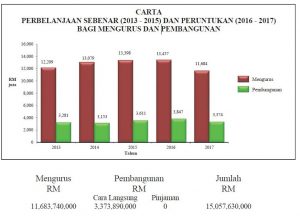
Development Expenditure (DE) which pays for new assets is set at RM3.373 billion, a decrease of some RM440 million from 2016. It is also the lowest DE since 2014. DS Najib during the presentation of the budget only mentioned that the Armed Forces will be getting patrol vessels and armoured 8X8 vehicles from the 2017 allocation.
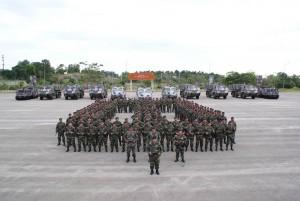
51 Rejimen KAD pictured at its anniversary in 2012. Note the Arthur WLR on the BV206 vehicles on both sides at the back.
The patrol vessels is of course, the Littoral Combat Vessels being built by BNS while the 8X8 is the Gempita. It could also be the LMS as during the speech, Najib told Parliament he was going to China next week.

The security sector was among the last items touched in the budget speech. Part of the speech which touched on defence and national security.
Therefore, I am pleased to announce the Government will provide Special Insurgency Incentive Payment to veteran Malaysian Armed Forces amounting to RM55 million to those who are yet to receive their special incentive. To enable veterans who have lost their abilities during their service is eligible for this incentive. For an example, a corporal who has lost 80% of their ability during his service is eligible for bulk incentive of RM34,000 and monthly incentive of RM590 subject to current calculation. This is a new incentive in addition to Disability Pension.
The Ministry of Defence (MINDEF) will be allocated a sum of RM15.1 billion. Of which, a sum of RM1.8 billion is provided for defence asset maintenance such as aircraft, patrol vessels, communication equipment, buildings and weaponry. The ATM will be equipped with patrol vessels and 8×8 armoured vehicles. In addition, a sum of RM1.3 billion is allocated, among others for communication devices, rations and uniforms.
To enhance effectiveness of ESSZONE operations, a sum of RM323 million is allocated for personnel deployment at the eastern border of Sabah. Mr Speaker Sir,.In additio n, the Government will create Sea Basing at the East Coast of Sabah waters and Helicopter Forward Operating Base. Also, the Government will place AV8 GEMPITA 8×8 and 4×4 armoured vehicles in Lahad Datu as well as deploy of Hawk fighter jets and Eurocopter EC-725 helicopters squadron at the Labuan Air Base.
The armed forces will also build and upgrade roads under the Jiwa Murni Programme with an allocation of RM114 million in the interiors of Sarawak. In addition, Armed Forces School Ferry services involving 15,000 children of ATM nationwide will be continued. Meanwhile, the Ministry of Home Affairs (KDN) is allocated RM12.8 billion including a sum of RM8.7 billion for the Royal Malaysia Police.
Among the major programmes and projects include building 12 district police headquarters, commando 69 training centres as well as procurement of vehicles and equipment. In addition, a sum of RM60 million is allocated to enhance the effectiveness of crime prevention in cities including the omnipresence and Motorcycle Patrol Unit.
The Government also recognises the role of RELA in ensuring a safe and peace society. For this, the Government will provide RM80 million to more than 200,000 RELA members. Two of their representatives are with us today, please put your hands together for their contribution. To ensure a safe and peaceful neighbourhood, the Government will provide RM40 million to reintroduce grant to the registered Residence Association. These grants of up to RM10,000 is provided for purchase of security control equipment, cleaning and maintenance of neighbourhood. Mr. Speaker Sir,
For regular readers of Malaysian Defence, most of the items in the speech are old news apart from the line that says a sum of RM323 million is allocated for personnel deployment at the eastern border of Sabah.
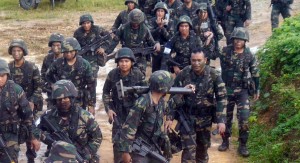
I am assuming that this means that the proposed ESSCOM brigade and border regiment (also brigade size) have been funded and the Army will be getting its fifth division soon.
For 2017, the budget for the all three services have been reduced drastically with the Army getting the most allocation for OE (RM5.420 billion) as it has the most personnel (around 150,000) with the maritime and air operations following closely behind.
Most of the OE allocation is of course consumed by emolument costs while the rest are used to pay for logistics, training and operational costs.
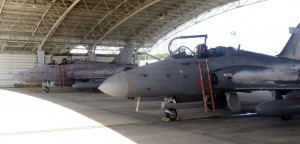
The same document also revealed that despite the budget reductions across the board, the allocation for LIMA 17 is pegged at RM17 million. The amount is higher for the cost of paying for the ESSCOM operations involving the forward base and the basing of aircraft at Labuan and Lahad Datu which was pegged at RM10 million.
The document did not revealed how much money was spent for LIMA 2015.
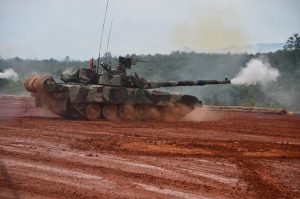
As for DE, the Army got the biggest share with RM1.26 billion compared to the RMN (RM1.088 billion) and the RMAF at RM462 million. As the Army and RMN projects are being conducted locally (LCS and Gempita) its elementary that the government continue funding them while the RMAF only got the sole A400M to pay for.
What about MRCA then? If we did order the new planes we only need to pay a small deposit and payments will only start when the aircraft are delivered. I am still skeptical of an order soon, however.
It must be noted that the DE projects registered with the Finance Ministry is listed at more than RM36 billion. The government however have only spent around RM12 billion between 2011 and 2015.
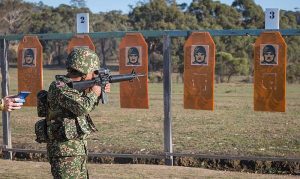
For this year, the budget document did not specify the amount of money allocated for the whole security sector – defence and national security. From my cursory reading it should be around RM29 billion with RM5.1 as the DE. The total allocation for the security sector decreased by some RM2.2 billion compared to the 2016 allocation of RM31.2 billion.
Listed below are the allocations for the rest of the sector, figures in brackets are for the allocation in 2016.
National Security Council OE RM70 million (RM610.2 million)
DE RM498 million (RM12.3 million)
Malaysian Maritime Enforcement Agency OE RM383 million (RM428 million)
DE RM378 million (RM399 million)
ESSCOM OE RM19.5 million (RM21.4 million)
DE RM44 million (RM12 million)
Disaster Relief Agency OE RM17.8 million (RM8.6 million)
All of the agencies above comes under the Prime Minister’s Department. There was no DE allocation for the Disaster Relief Agency, which was spin-off from NSC. It is likely that the agency only received funding under OE as its most of assets are to be leased (paid under OE) or supplied by other agencies like the Armed Forces, Bomba, MMMEA and PDRM.
PDRM OE RM8.180 billion (RM8.164 billion)
DE RM554 million (RM301 million)
RELA OE RM112.878 million (RM112.891 million)
DE RM1 million (RM5.75 million)
Apart from the OE figures above, the government through the Home Ministry is also paying directly around RM789 million for PDRM facilities like the Air Wing hangar in Subang, and ESSCOM personnel costs.
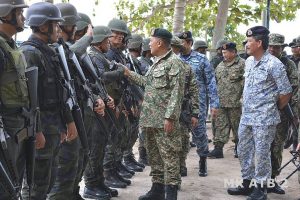
The budget document detailed the spending breakdown of the police 2017 DE. One figure that leap out was the allocation of RM78.45 million for the purchase of weapons and ammunition. Does this mean that the police is finally buying their M4s? Your guess is as good as mine.
The police will also get RM14 million allocation to buy aircraft for its Air Wing. Most likely this is the payment for the two AW139 light twin helicopters announced earlier this year. The two helicopters are already here though the police have not formally accepted them.
The rest of the DE allocation for the police are for quarters and other facilities as well as new vehicles, technical, communications and computer equipment. It is also likely the funding of RM25 million for the prevention of crime under the National Key Results Area (1) will allow the police and the RELA to buy off the shelf purchases of equipment from weapons, bullet proof vests to torch-lights.
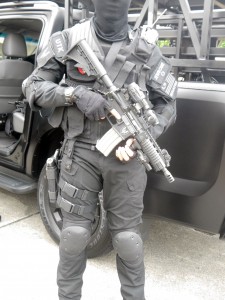
Analysis
With commodity prices under pressure for almost third year running and the world’s economy in a flux, it was expected that the government will have to cut its spending. However the total budget is a 3.4 per cent increase from the re-calibrated 2016 budget. However as this is a deficit budget, funding across the board has been slashed.
As it its easier to cut spending for things that seemingly without any tangible benefits to the rakyat, of course the security sector will bear the brunt of any reduction. However, emolument costs continue to rise and locally manufactured items continue to be funded.
While cutting allocation during hard times is good for the short term, further delays in funding for important projects – pick your own – will only exacerbate the problem in the longer term.
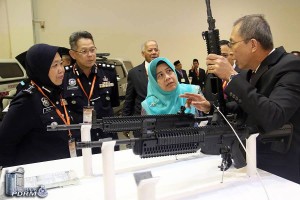
As it is most of the ships in the navy – as one example – is in a great need of replacement. So instead of replacing the ships at a more leisurely pace – two a year for example – in the near future, there will come a time we may have to retire ships without any replacement.
This woeful scenario likely to happen soon with the RMAF, as retirement for the Mig-29s are looming without any replacement in sight. Once an aircraft is declared non serviceable, it could no longer fly, unlike ships which could be towed to sea and used as a floating base even if its engines are not working.
— Malaysian Defence
If you like this post, buy me an espresso. Paypal Payment

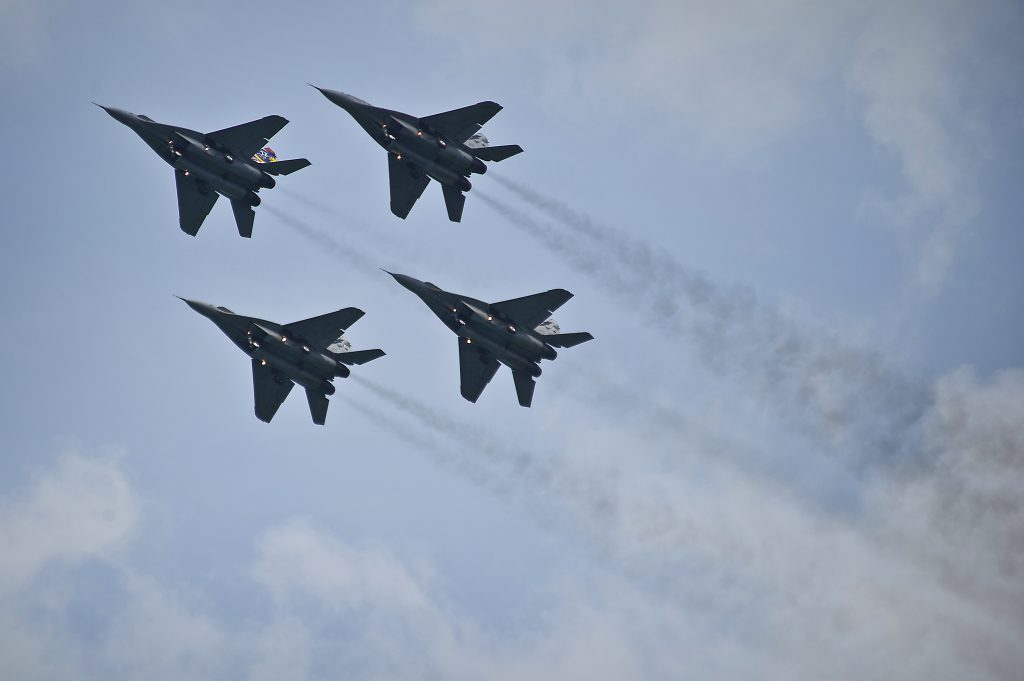
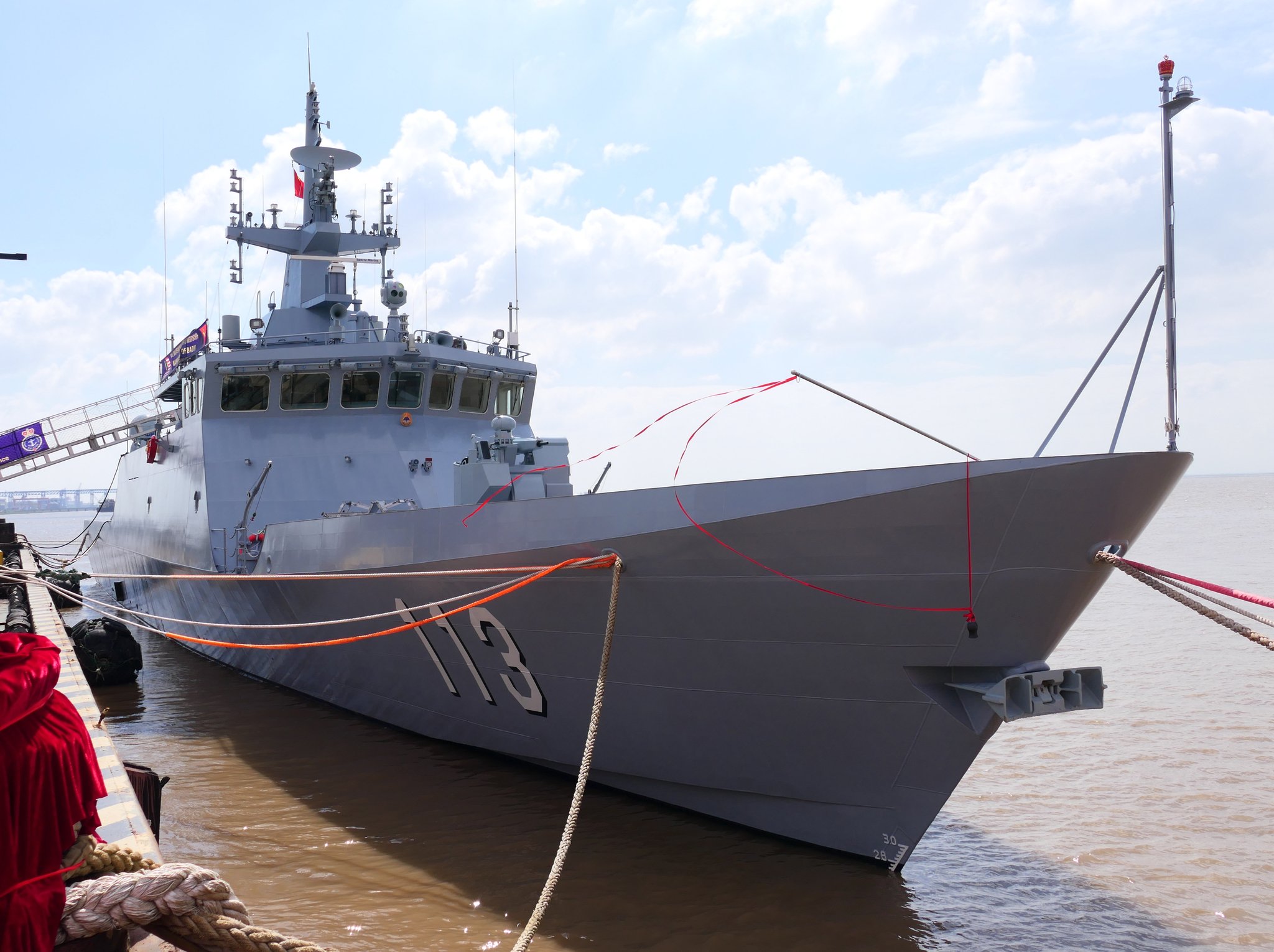
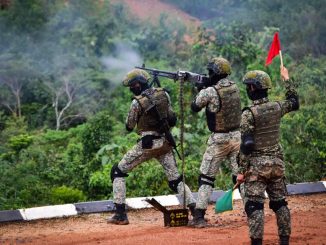
No LMS?
Reply
It was not announced but Najib is going to China next week
Annual budgets for defence should not be seen on its own without looking at the bigger 5 years Malaysia Plan aka Rancangan Malaysia. As for defence, the current RMK11 (2016-2020) the big ticket items (that is paid for) for the military would be the AV8 (army), the gowind SGPV LCS (navy) and the A400M transporters (airforce). Any other big ticket items (because of malaysian ringgit drop and others) would have to come in RMK12 (2021-2025).
There is always the possibility that certain – smaller – items [like the Laksamanas] will come from a separate budget
Reply
Yes there’s always the chance but it will be counted back as an allocation from the Defence Ministry when they tallied up the budget.
Going 2 china OMG.BTW idont think the gowind is only funded by rmk 11 alone.
Reply
Of course its not, its RMK10,11 and 12.
With reduced DE,future equipment supply may have to rely from Eastern block…buy cheap but can be a nightmare to maintain
SG’s budget 2.5x and indon’s budget 2x bigger.
We have smaller and bigger neighbour whose budgets are much bigger. So sad…….
Just says but not result occurs….hmmm thnks bro give info
At least something that is free of charge is going to be delivered to MMEA. There would be 2 of this ships donated by Japan to MMEA. This is probably the ships being involved
https://upload.wikimedia.org/wikipedia/commons/8/80/PL101_Shiretoko.jpg
Reply
We will have to wait and see whether the deal goes through or not.
If we do get them, we might end up deploying them in areas that are not disputed to avoid potentially annoying someone. There was apparently a previous case of us being offered something from Japan with China making it known that it could more than match the Japanese offer. To avoid complications we dropped it. The MMEA had previously received a training boat, RDF gear and NVGs courtesy of Japan. A lot also depends also on how much it will cost to run and maintain whatever’s afford to us. We have declined some offers in the past for this reason.
Marhalim,
There’s a pic of troops [either RMR or Ranger] with some having sights on their M-4s. I can E-mail you the pic. Apart from the small batch of Trijicon sights bought years ago, are you aware of any recent orders for sights?
Reply
Yes send it to me by email. Not big ones but as usual small orders do come from time to time as confirmed by the fact that the Army’s markmanship team got sights for their M4s. I guess the Army want sights for its rifles but as they cannot get the funding for a big buy, they buy them in small batches instead. Is it ideal? Not really most likely we will get small batches of every sights available. The more, the merrier.
But most of it will come from rmk 11 i believe.If i may ask what is the reason they change the tonnage for the gowind.i didnt see any significant improvement except it will stay longer at sea.if we didnt change it i think for the same amount we can have 8 instead of 6 gowind with the same firepower.
While we’re on the topic of personal gear, there’s also a recent pic at Malbatt of a combat shirt in the army’s new camo pattern, and a pic of a armed forces chief in the desert version of the new pattern.
Reply
We are in a camo rojak
ujang,
Steel is cheap. It’s what goes inside the steel that’s not cheap. Whether the LCS has a 2,800 tonne full displacement or a 3,300 tonne one; it won’t make much of a price difference. The LCS has been mentioned of having a displacement of 3,000 tonnes; not sure if this is a full displacement or not.
@azlan
Correct me if im wrong But from what i gathered so far if we stick with 2500 tonne like egypt we can get 8 gowind for 9b and its has the same firepower OMG.8 will offer more flexibility.
Reply
No lah
So basically the whole DE went to existing projects; Gowind, A400M, Av8.
I know these figures are held very tightly by our Govt, sigh, but if possible, do we know how much has been paid up for each project and how much more is outstanding? That way we will know what is our commitment.
If anyone has any alternative ideas for defence budget, it would be interesting to share. I for one would like to invest in either French MMP or more Ingwe ATGMs for our infantry AT platoons, and of course there is MRCA…
Reply
If it was available of course I will publish it but it’s not.
“SG’s budget 2.5x and indon’s budget 2x bigger.We…” Sad indeed, but overall we have less monies to start with. Consider us a bit lucky, no increase in GST and income tax yet have to bear with reduced subsidies. Increase in emolument reflected an increase of manpower, salaries, compensations, benefits for Defence folks.
Ujang,
Major differences between us and Egypt. We are building the LCS here and we have no idea how Egypt is fitting out its ships. One can’t make direct comparisons as the final price depends on various factors. In the past opposition figures and NGOs would often make direct price comparisons under the false impression that customer ‘X” should pay a similar figure to customer ‘Y’ for the same equipment; without taking into account the support/training package, inflation, ToTs, offsets, etc.
Chua,
Ingwe is too big and heavy to be deployed by infantry. Ideally to equip the anti-tank platoons in the Support Companies something lighter and less bulky like Javelin will be issued. Even Javelin which is designed for use by infantry is heavy and bulky to me.
Javelin is heavy (it exceeded its design weight targets) but the improved version in development now has extended range (made possible by a smaller warhead and more propellant). So in time, there may be a smaller and lighter missile available for non motorized use.
To put weight in perspective, even light infantry units have to be motorized and conduct the majority of their movement while motorized. Weight surely affects the dismounted portion of their movement, but all heavy weapons and all forms of fire support (unless you are fighting a tank, there are alternatives) will weigh you down. Therefore if you are dismounted and able to call up a mounted weapon instead of bringing your own, you should. Tactically speaking, features like top attack mode and confined space firing should also be considered.
AM,
All ATGWs designed to be carried by infantry are heavy; whether its MILAN 1, Kornet, Konkurs or BILL. The only one I can think off that was really ”light” was Sagger [it came in an easy to carry briefcase]. To me Eryx is quite compact say to Metis. Stuff like TOW and Ingwe are really designed to be operated from vehicles or to be carried by vehicles. Another issue with ATGWs – apart from weight – is reloads. How many reloads can be carried by a platoon or section?
The same issue is faced with section issued 60mm mortars. It is for this reason why in the past; in response to someone who wanted to increase the firepower of the already loaded down BIS sections; I asked how are we going to keep these sections adequately resupplied as they have several hungry weapons which will go hungrier fast in a protracted engagement.
ATGWs by right – even short range lighter ones – are intended to be carried by AT platoons which are normally part of Support Companies. The problem is that infantry are often required to lug ATGWs with them, even when operating on foot. A good example of this would be the Brits in Helmand province. They carried Javelins with them for its range and to engage Talibs operating in mud walled buildings/compounds. Granted the average Brit has a larger built than the average Malaysian soldier but carrying Javelin is still not easy. We also had the Falklands where troops operating of foot lugged MILAN 1s all the way from San Carlos to Stanley. Hezbollah in 2006 had an easier time as it had lots of 4x4s to help move their ATGWS around.
The key is to carry a ATGW that is as light and compact as possible and to also have adequate reloads – easier said than done. It’s fine when infantry are operating with their vehicles but there will be times when they will have to operate on foot; either because of the restrictive terrain or because vehicles are not available. Top attack mode should always be a must because even the most heavily protected MBT can’t take a top hit from a top attack munition. The only defence would be an APS.
Indeed, all heavy weapons will weigh down an infantry unit. The fact that they are billed as “man portable” means little to the user, it is inevitable that vehicles must be used whether it is a Javelin or a TOW.
The fact that the missile team’s primary mission is to meet armour calls into question why the missile team must be prepared to carry its weapon on foot, a vehicle can operate in the same area.
I appreciate the Afghanistan and Falklands examples where a long movement on foot was necessary, but they are not quite the situations we expect to find ourselves in. In fact, neither situation involved engaging large armoured units and one wonders if weapons such as our RPGs, would have been sufficient and less of a burden. The fact that we deploy RPGs so extensively suggests we bought them to engage more than just armour.
Granted the Javelin will offer superior range, accuracy and all weather capability and this will be valuable at some time. But we simply cannot meet every single need with a specific solution.
Having a missile team that expects to move extensively on foot, constrained in speed, range and limited reloads, is something we can do without.
AM – ”a vehicle can operate in the same area.”
What happens if the vehicle is soft skin and has to be kept back away from direct fire? What happens if no vehicles are available or can’t deploy for whatever reason?
AM – ”I appreciate the Afghanistan and Falklands examples where a long movement on foot was necessary, but they are not quite the situations we expect to find ourselves ”
Nobody can say that for certain the operational scenarios we might face in the future. Prior to 2013 who would have expected that we would have to deploy large numbers of troops to fix and eliminate small groups of non state actors in a larger estate? There will be many instances where troops operating on foot will have a need for an organic ATGW capability; if not to engage vehicles; other targets [as was the case in the Falklands, Afghanistan and other conflicts].
AM – ”In fact, neither situation involved engaging large armoured units and one wonders if weapons such as our RPGs, would have been sufficient and less of a burden.”
When engaging bunkers or similar stuff; ATGWS have better standoff range compared to a shoulder launched weapon and better optics. This is why troops in Afghanistan carried their Javelins around. We used Nammo M-72s at Lahad Dato. A used one was later displayed at Dataran Merdeka. I took a pic and Marhalim posted it.
AM – ”The fact that we deploy RPGs so extensively suggests we bought them to engage more than just armour.”
We bought them primarily to deal with the traditional types of targets one would use a shoulder launched weapon for. They can also be used for AP work, sure.
AM – ” But we simply cannot meet every single need with a specific solution.”
Who says we are? That’s why RPGs and LAWs are organic to sections and Support Companies have Carl Gustavs. The Americans are introducing the Carl Gustav into service. Prior to this the Carl Gustav was mainly used by the Rangers so it’s telling that they see a need to bridge the gap between the C-90 and Javelin.
To add, the British never intended to move on foot across the Falklands and carry the Milan with them. The march had to be done only because the ship carrying their helicopters was sunk. They had few vehicles and they would not have been able to move on the soft and roadless ground. The British faced much different conditions from here.
“What happens if the vehicle is soft skin and has to be kept back away from direct fire?”
Would a team on foot be more survivable? Men can find cover and concealment, but so can light vehicles. Indoor cover is an issue because most ATGWs can’t be fired indoors.
To keep back from direct fire, you need a longer standoff distance, which means a larger and heavier missile, which only a vehicle can carry.
Standoff distance is more important in this day and age of missile warning devices and automatic turret slewing. Various systems use radar, acoustic and IR detection to pick up either the missile or the launch signature, and automatically slew the turret to face the missile team.
“What happens if no vehicles are available or can’t deploy for whatever reason?”
The lightest missile carried on foot is simply not going to move quickly enough. If the team makes it to the engagement, it will likely be lost there because it is not mobile enough, or have to move but abandon the launcher.
“Nobody can say that for certain the operational scenarios we might face in the future. ”
True, but in this instance the unexpected scenario would mean there is an area where enemy vehicles can operate and our vehicles cannot.
Malaysia has a different operating environment compared to Afghanistan or the Falklands. . Malaysia is a jungle environment. Even platoons have 60mm mortars n carl gustav weapons. The carl gustaf is a great weapon. it can fire he anti tank ( shape charge), now there are even double charges for reactive armour n also thermobaric warhead. The thermobaric warhead does not even need a direct hit. it uses pressure to kill.
In a platoon, ammunition is shared n carried by everyone in the platoon with exception of the officer or sergeant. All will carry at least 200 to 600 rou ds of ammo, spare belts for the lmg, spare belts for the gpmg n also at leasteast one mortar bomb per soldier. Heavy load?. of course. transport?. oops sorry. no roads in the jungle. only if deployed by road would transport be provided. but at the FUP everyone must debuss n from there move to the start line. So the most reliable transport is still the soldiers two feet
Lee – ”Malaysia has a different operating environment compared to Afghanistan or the Falklands. . ”
Nobody said otherwise …..
There is however a difference between ”operating environment” and ”operational circumstances ”.
OMG not again.Our AF aset is continuously depleting with MiG 29 used as backup sqn.Numbers used is in doubt.
I m hoping mindef will get some special fund for the AF atleast to buy second hand jet fighters while waiting for new inventory.
We are lacking behind interms of quantity vs others AForces in the region.Spore,Indonesia,Thailand,Vietnam are well ahead of us interms of asset.
Even the Phil AF is going to get some new aircrafts and for the next 5 yrs I think they are on par or better than the RMAF.
I am hoping that the Govt will do something ‘extra’ to get our AF back into the right track again.